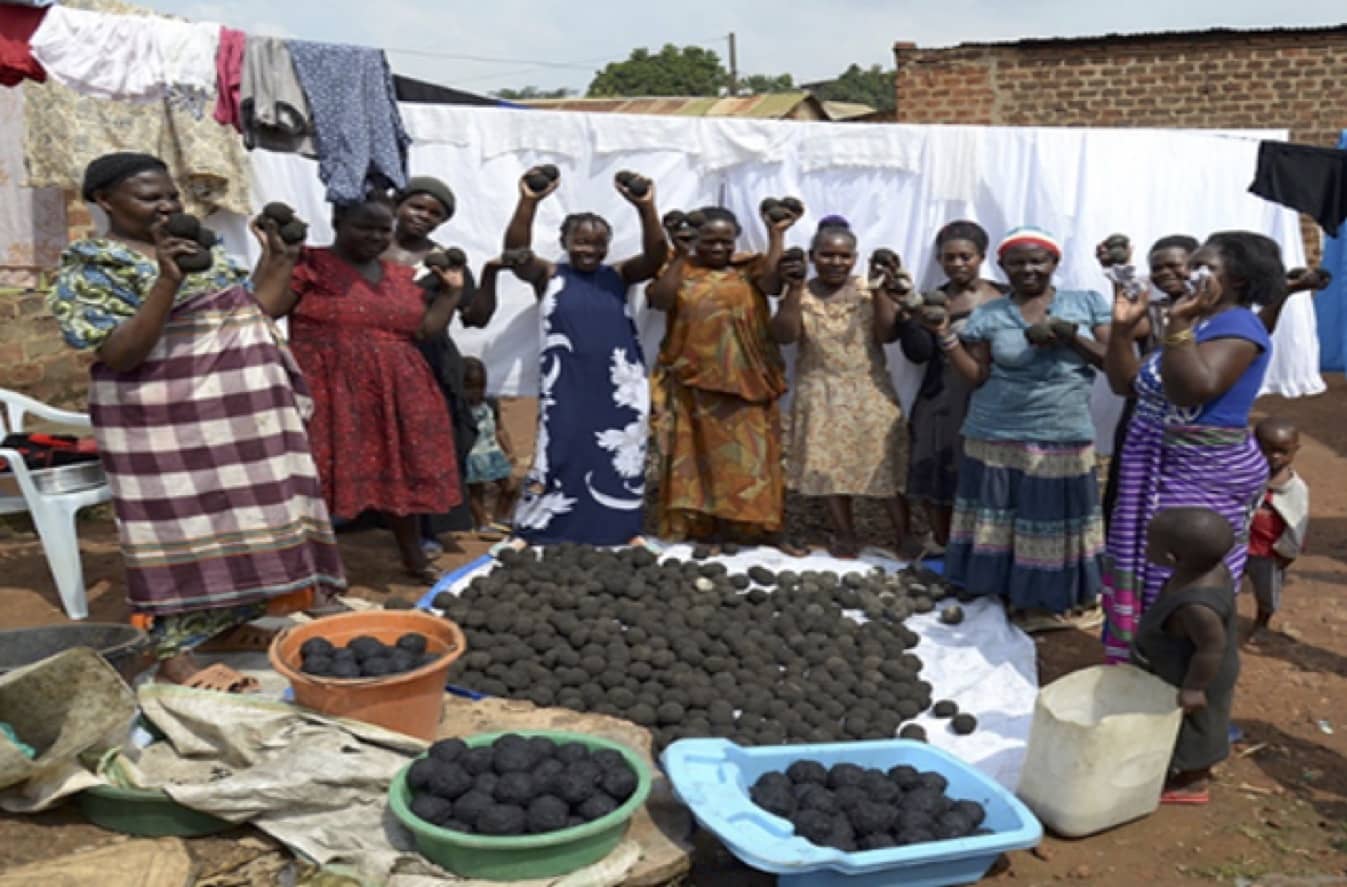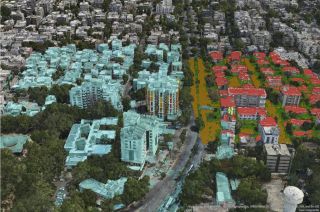
www.buildingsandcities.org/insights/commentaries/cop27-climate-finance.html
COP27: Empower Climate Finance in Global South Cities

By Kareem Buyana (Makerere University)
Financial instruments and valuation techniques and have been developed over the last decade to convert cities' low-carbon qualities and risks into new asset classes. However, the consequences of the financialisation of urban climate action are not well understood. Policy responses to these financial practices and their urban climate change transformations are too limited. COP27 urgently needs to develop a wider range of climate finance mechanisms for bottom-up practices.
There is a need to shift to more just forms of climate action and more transformative models of finance in cities. This commentary asks what processes are needed to 'decentre' urban climate finance, and discusses two specific themes: 1) decentring mainstream climate finance i.e. financial institutions currently determine the objects for concern and chose how to allocate resourcing for climate action; and 2) the catalytic role of communities i.e. local communities are best placed to determine financing decisions for low-carbon transitions with non-traditional business models that support more appropriate climate actions.
Decentring mainstream climate finance
Current spending on climate actions by governments is insufficient to deliver necessary change, even when official development assistance (ODA) spending is factored in. One estimate suggests that the implementation of the Sustainable Development Goals (SDGs) in low- and lower-middle income countries is likely to require an additional US$1.4 trillion per year on top of existing revenue commitments, mostly to cover the operational and maintenance costs of new infrastructure (Schmidt-Traub 2015). Thus, there is a need for more international financial commitment. Beyond this though, it is also important to consider how decisions are made over how to allocate investment in climate action in cities.
Municipalities have a key role to play in delivering the SDGs, in keeping with their responsibility for the provision of essential infrastructure, land use planning and representative government. The Third International Conference on Financing for Development, held in Addis Ababa in July 2015, emphasized the importance of building financial capabilities at all levels to mobilize and guide finance (United Nations 2015). Thirteen years ago in 2009, at COP15 in Copenhagen, rich nations made a significant pledge to channel US$100 billion a year to less-wealthy nations to help them adapt to climate change and mitigate further rises in temperature (Timperly 2021). However, there was still a US$20 billion annual shortfall in 2019 and a much greater cumulative shortfall between 2013-2019 (Neufeldt et al. 2020; OECD 2022).
An urgent agenda item for COP27 must be action on overcoming the limitations of financial mechanisms that inhibit urban transformations. Previous case studies conceptualise climate finance in relatively narrow terms (e.g. as financial instruments created for the purposes of 'greening' capital markets) or with a handful of cities and asset classes in which consolidated financial markets are already the norm (e.g. high-value property market segments within the urban Global North). This approach is often inappropriate for many cities and communities in the Global South where investment may achieve greater climate action impacts (Robin 2022).
A better understanding is needed of how emerging climate finance mechanisms intersect with urban governance, planning, and management functions. A key question is: whether these mechanisms generate climate action lead by and for the benefit of local communities? For example, how are urban sites shaped by climate-relevant financial flows? How are established climate-financial centres constitutively configured by far broader geographies of extraction and experimentation? How do the heterogenous practices and instruments that constitute 'ordinary' or 'everyday' climate finance work across diverse cities, urban spaces, and modes of provisioning for everyday life? How are unjust climate finance outcomes regulated by institutions or resisted locally? What alternatives to extractive and predatory climate finance are emerging? And how can an expansion
Climate injustice may be perpetuated by incumbent financial instruments. More emphasis on heterogeneous finance practices and outcomes may be needed including allowing finance to be regulated by institutions or resisted locally. An exploration of alternatives to existing climate finance is needed. This can incorporate an expansion of theoretical approaches and bring viewpoints of local communities better into view.
The catalytic role of community savings in financing low-carbon transitions
Investment in climate action focusses on supporting adaptation and mitigation but it does not necessarily fundamentally address urban transformation or support the sustainable development of informal settlements. This is a missed opportunity since finance targeted at local organizations and social movements enhances collective voices that are better able to engage and collaborate with local authorities to ensure co-design of climate investment. Giving local people more ownership of investment decisions can result in more innovative solutions, greater backing, and broader, longer lasting benefits than top-down climate initiatives.
Mobilising community saving schemes is one potential solution for funding climate actions in informal settlements, that has been trialled in Kampala City, Uganda. In this project all members play an active part in the collection, banking, and auditing of investments (Mitlin et al. 2011). Collective savings are invested in local low-carbon transition projects. This creates horizontal relationships among residents underpinning coordinated efforts to scale up home-grown climate actions.
This approach may be more appropriate for informal settlements than conventional climate finance instruments. The latter are predominantly shaped by the visions of actors at multi-lateral, national and sub-national levels i.e. little attention is given to the circumstances of local communities and successful locally grown financing actions. The potential for local schemes (e.g. collective savings) to contribute to systemic change at global scale is not recognised. Dialogue with local community representatives in Kampala city revealed that their neighbourhood-scale innovations and groups have been successful in balancing the need to generate viable financial projects and promote the need for energy and urban environmental health protection (Buyana et al. 2019).
Their community savings group, called the Kasubi Local Development Association (KALOCODE), funded a project on organic and inorganic waste re-use and recycling. This used polythene and drinking straws to make handbags and baskets, and reused newspaper and bags to make trays for eggs.
Another similar project called the Kawaala Recycling and Manufacturing Group (KARMADEG) started waste sorting-processing to produce animal and poultry feed to fill the gap created by the high cost of maize bran. They collect banana and cassava peelings to produce animal and poultry feed supplementing maize bran. This reduces the cost of feeds by about 36% making it possible for ordinary farmers to raise poultry and pigs.
Neither of these projects could have been conceived via conventional climate financial institutions since they have been innovated from within local communities. If socially anchored innovations like these are up scaled and supported by local and central government, household incomes would increase, contributing to urban economic growth in sub-Saharan Africa as well as promoting mor sustainable resource consumption.
When local ventures prove successful business models, this also opens the opportunities to merge local and international finance instruments. There are already some examples of this. The National Slum Dwellers Federation of India and Mahila Milan, which has strong community inclusion, leveraged US$55.9 million in subsidies from local community savings and backed by regional national government to secure a further US$18.6 million in ODA. This project has already provided sanitation for more than 163,000 families and shelter for more than 86,000 families (Shand and Colenbrander 2018). Thus, more flexible combinations of approaches to climate action and financing models may create more innovate solutions and greater outcomes than conventional financial instruments alone.
Conclusions
Climate finance tends to create vertical relationships with local authorities, utilities, and other public bodies. However, savings groups at local community levels, could produce stronger horizontal and relationships and provide more flexibility, innovation and efficiency in climate finance. Conventional finance could engage more with local community finance. As a matter of urgency, COP27 needs to discuss a wider range of climate finance mechanisms and specifically how to scale up of successful bottom-up practices like community savings. This could maximize the efficacy of existing resources and realize the complementary capacities of different stakeholders. It is not only how much investment is pledged, rather it is a question of how and where this is invested that can determine how climate justice can be improved.
References
Buyana, K., Byarugaba, D., Sseviiri, H., Nsangi, G., & Kasaija, P. (2019). Experimentation in an African neighborhood: reflections for transitions to sustainable energy in cities. Urban Forum, 30(2), 191-204.
Mitlin, D., Satterthwaite, D. & Bartlett, S. (2011). Capital, capacities and collaboration: the multiple roles of community savings in addressing urban poverty. [working paper]. London: International Institute for Environment and Development. http://pubs.iied.org/10611IIED
Neufeldt, H., Christiansen, L. & Dale, T. W. (eds.) (2021). Adaptation Gap Report 2020. United Nations Environment Programme.
OECD. (2022). Aggregate Trends of Climate Finance Provided and Mobilised by Developed Countries in 2013-2020. Paris: OECD Publishing. https://doi.org/10.1787/d28f963c-en
Robin, E. (2022). Rethinking the geographies of finance for urban climate action. Transactions of the Institute of British Geographers, 47(2), 393-408.
Schmidt-Traub, G. (2015). Investment needs to achieve the sustainable development goals: understanding the billions and trillions. [working Paper, version 2]. New York: Sustainable Development Solutions Network. http://www.jstor.com/stable/resrep15864
Shand, W. & Colenbrander, S. (2018). Financing the inclusive city: the catalytic role of community savings. Environment and Urbanization, 30(1), 175-190. https://doi.org/10.1177/0956247817751340
Timperly, J. (2021). The broken $100-billion promise of climate finance-and how to fix it. Nature, 598, 400-402.
United Nations. (2015). Addis Ababa Action Agenda of the Third International Conference on Financing for Development. New York: United Nations. http://www.un.org/esa/ffd/wp-content/uploads/2015/08/AAAA_Outcome.pdf
Latest Peer-Reviewed Journal Content
A framework for 1.5°C-aligned GHG budgets in architecture
G Betti, I Spaar, D Bachmann, A Jerosch-Herold, E Kühner, R Yang, K Avhad & S Sinning
Net zero retrofit of the building stock [editorial]
D Godoy-Shimizu & P Steadman
Co-learning in living labs: nurturing civic agency and resilience
A Belfield
The importance of multi-roles and code-switching in living labs
H Noller & A Tarik
Researchers’ shifting roles in living labs for knowledge co-production
C-C Dobre & G Faldi
Increasing civic resilience in urban living labs: city authorities’ roles
E Alatalo, M Laine & M Kyrönviita
Co-curation as civic practice in community engagement
Z Li, M Sunikka-Blank, R Purohit & F Samuel
Preserving buildings: emission reductions from circular economy strategies in Austria
N Alaux, V Kulmer, J Vogel & A Passer
Urban living labs: relationality between institutions and local circularity
P Palo, M Adelfio, J Lundin & E Brandão
Living labs: epistemic modelling, temporariness and land value
J Clossick, T Khonsari & U Steven
Co-creating interventions to prevent mosquito-borne disease transmission in hospitals
O Sloan Wood, E Lupenza, D M Agnello, J B Knudsen, M Msellem, K L Schiøler & F Saleh
Circularity at the neighbourhood scale: co-creative living lab lessons
J Honsa, A Versele, T Van de Kerckhove & C Piccardo
Positive energy districts and energy communities: how living labs create value
E Malakhatka, O Shafqat, A Sandoff & L Thuvander
Built environment governance and professionalism: the end of laissez-faire (again)
S Foxell
Co-creating justice in housing energy transitions through energy living labs
D Ricci, C Leiwakabessy, S van Wieringen, P de Koning & T Konstantinou
HVAC characterisation of existing Canadian buildings for decarbonisation retrofit identification
J Adebisi & J J McArthur
Simulation and the building performance gap [editorial]
M Donn
Developing criteria for effective building-sector commitments in nationally determined contributions
P Graham, K McFarlane & M Taheri
Reimagining circularity: actions for optimising the use of existing buildings
R Lundgren, R Kyrö, S Toivonen & L Tähtinen
Effective interdisciplinary stakeholder engagement in net zero building design
S Vakeva-Baird, F Tahmasebi, JJ Williams & D Mumovic
Metrics for building component disassembly potential: a practical framework
H Järvelä, A Lehto, T Pirilä & M Kuittinen
The unfitness of dwellings: why spatial and conceptual boundaries matter
E Nisonen, D Milián Bernal & S Pelsmakers
Environmental variables and air quality: implications for planning and public health
H Itzhak-Ben-Shalom, T Saroglou, V Multanen, A Vanunu, A Karnieli, D Katoshevski, N Davidovitch & I A Meir
Exploring diverse drivers behind hybrid heating solutions
S Kilpeläinen, S Pelsmakers, R Castaño-Rosa & M-S Miettinen
Urban rooms and the expanded ecology of urban living labs
E Akbil & C Butterworth
Living with extreme heat: perceptions and experiences
L King & C Demski
A systemic decision-making model for energy retrofits
C Schünemann, M Dshemuchadse & S Scherbaum
Modelling site-specific outdoor temperature for buildings in urban environments
K Cebrat, J Narożny, M Baborska-Narożny & M Smektała
Understanding shading through home-use experience, measurement and modelling
M Baborska-Narożny, K Bandurski, & M Grudzińska
Building performance simulation for sensemaking in architectural pedagogy
M Bohm
Beyond the building: governance challenges in social housing retrofit
H Charles
Heat stress in social housing districts: tree cover–built form interaction
C Lopez-Ordoñez, E Garcia-Nevado, H Coch & M Morganti
An observational analysis of shade-related pedestrian activity
M Levenson, D Pearlmutter & O Aleksandrowicz
Learning to sail a building: a people-first approach to retrofit
B Bordass, R Pender, K Steele & A Graham
Market transformations: gas conversion as a blueprint for net zero retrofit
A Gillich
Resistance against zero-emission neighbourhood infrastructuring: key lessons from Norway
T Berker & R Woods
Megatrends and weak signals shaping future real estate
S Toivonen
A strategic niche management framework to scale deep energy retrofits
T H King & M Jemtrud
Generative AI: reconfiguring supervision and doctoral research
P Boyd & D Harding
Exploring interactions between shading and view using visual difference prediction
S Wasilewski & M Andersen
How urban green infrastructure contributes to carbon neutrality [briefing note]
R Hautamäki, L Kulmala, M Ariluoma & L Järvi
Implementing and operating net zero buildings in South Africa
R Terblanche, C May & J Steward
Quantifying inter-dwelling air exchanges during fan pressurisation tests
D Glew, F Thomas, D Miles-Shenton & J Parker
Western Asian and Northern African residential building stocks: archetype analysis
S Akin, A Eghbali, C Nwagwu & E Hertwich
Join Our Community

The most important part of any journal is our people – readers, authors, reviewers, editorial board members and editors. You are cordially invited to join our community by joining our mailing list. We send out occasional emails about the journal – calls for papers, special issues, events and more.
We will not share your email with third parties. Read more



Latest Commentaries
COP30 Report
Matti Kuittinen (Aalto University) reflects on his experience of attending the 2025 UN Conference of the Parties in Belém, Brazil. The roadmaps and commitments failed to deliver the objectives of the 2025 Paris Agreement. However, 2 countries - Japan and Senegal - announced they are creating roadmaps to decarbonise their buildings. An international group of government ministers put housing on the agenda - specifying the need for reduced carbon and energy use along with affordability, quality and climate resilience.
Building-Related Research: New Context, New Challenges
Raymond J. Cole (University of British Columbia) reflects on the key challenges raised in the 34 commissioned essays for Buildings & Cities 5th anniversary. Not only are key research issues identified, but the consequences of changing contexts for conducting research and tailoring its influence on society are highlighted as key areas of action.